FLEMING, Alexander (1881-1955). 'On the Antibacterial Action of Cultures of a Penicillium, with special reference to their use in the isolation of B. Influenzae', The British Journal of Experimental Pathology , volume 10. London: H.K. Lewis Co. Ltd, 1929. 4 (240 x 175mm.) Contemporary library buckram (shaken, spine faded, label worn), modern half calf slipcase. Provenance : Institute for Cancer Research (bookplate and library stamps). FIRST PUBLICATION OF THE SCIENTIFIC PAPER DESCRIBING THE DISCOVERY OF PENICILLIN. Sir Alexander Fleming devoted most of his professional career to bacteriology and he was among the first to treat syphilis with Salvarsa, a substance that was discovered in 1909 by Paul Ehrlich who had sent samples to Almroth Wright, Fleming's superior at St. Mary's Hospital in London. Fleming's best work was done during the 1920s. He maintained that ideal therapeutic anti-bacterial agents should arrest the growth of bacterial invaders without affecting host tissues as ordinary germicides did. 'Sharp observation, pertinacious curiosity, and a prepared mind' enabled him to discover two outstandingly important antibacterial substances, lysozyme and afterwards penicillin. In 1928 he first observed the antibacterial effect of penicillium mold, and reported in the above paper that 'penicillin' did not interfere with leucocytic function, was nontoxic to laboratory animals, and 'may be an efficient antiseptic for application to, or injection into, areas infected with penicillin-sensitive microbes.' The first clinical trials were abandoned due to difficulties in growing the culture in a controlled way. But, as Claude Dolman states (DSB), Fleming 'never lost confidence that penicillin would be stabilized and purified, and rejoiced when Ernst Chain, Howard Florey, and their co-workers accomplished this at Oxford in 1940.' In 1945 Fleming, Chain and Florey jointly received the Nobel Prize in medicine for the discovery and isolation of a drug which had already saved countless lives during World War II and whose adoption swiftly became universal. Garrison-Morton 1933; Norman 798; PMM 420.
FLEMING, Alexander (1881-1955). 'On the Antibacterial Action of Cultures of a Penicillium, with special reference to their use in the isolation of B. Influenzae', The British Journal of Experimental Pathology , volume 10. London: H.K. Lewis Co. Ltd, 1929. 4 (240 x 175mm.) Contemporary library buckram (shaken, spine faded, label worn), modern half calf slipcase. Provenance : Institute for Cancer Research (bookplate and library stamps). FIRST PUBLICATION OF THE SCIENTIFIC PAPER DESCRIBING THE DISCOVERY OF PENICILLIN. Sir Alexander Fleming devoted most of his professional career to bacteriology and he was among the first to treat syphilis with Salvarsa, a substance that was discovered in 1909 by Paul Ehrlich who had sent samples to Almroth Wright, Fleming's superior at St. Mary's Hospital in London. Fleming's best work was done during the 1920s. He maintained that ideal therapeutic anti-bacterial agents should arrest the growth of bacterial invaders without affecting host tissues as ordinary germicides did. 'Sharp observation, pertinacious curiosity, and a prepared mind' enabled him to discover two outstandingly important antibacterial substances, lysozyme and afterwards penicillin. In 1928 he first observed the antibacterial effect of penicillium mold, and reported in the above paper that 'penicillin' did not interfere with leucocytic function, was nontoxic to laboratory animals, and 'may be an efficient antiseptic for application to, or injection into, areas infected with penicillin-sensitive microbes.' The first clinical trials were abandoned due to difficulties in growing the culture in a controlled way. But, as Claude Dolman states (DSB), Fleming 'never lost confidence that penicillin would be stabilized and purified, and rejoiced when Ernst Chain, Howard Florey, and their co-workers accomplished this at Oxford in 1940.' In 1945 Fleming, Chain and Florey jointly received the Nobel Prize in medicine for the discovery and isolation of a drug which had already saved countless lives during World War II and whose adoption swiftly became universal. Garrison-Morton 1933; Norman 798; PMM 420.


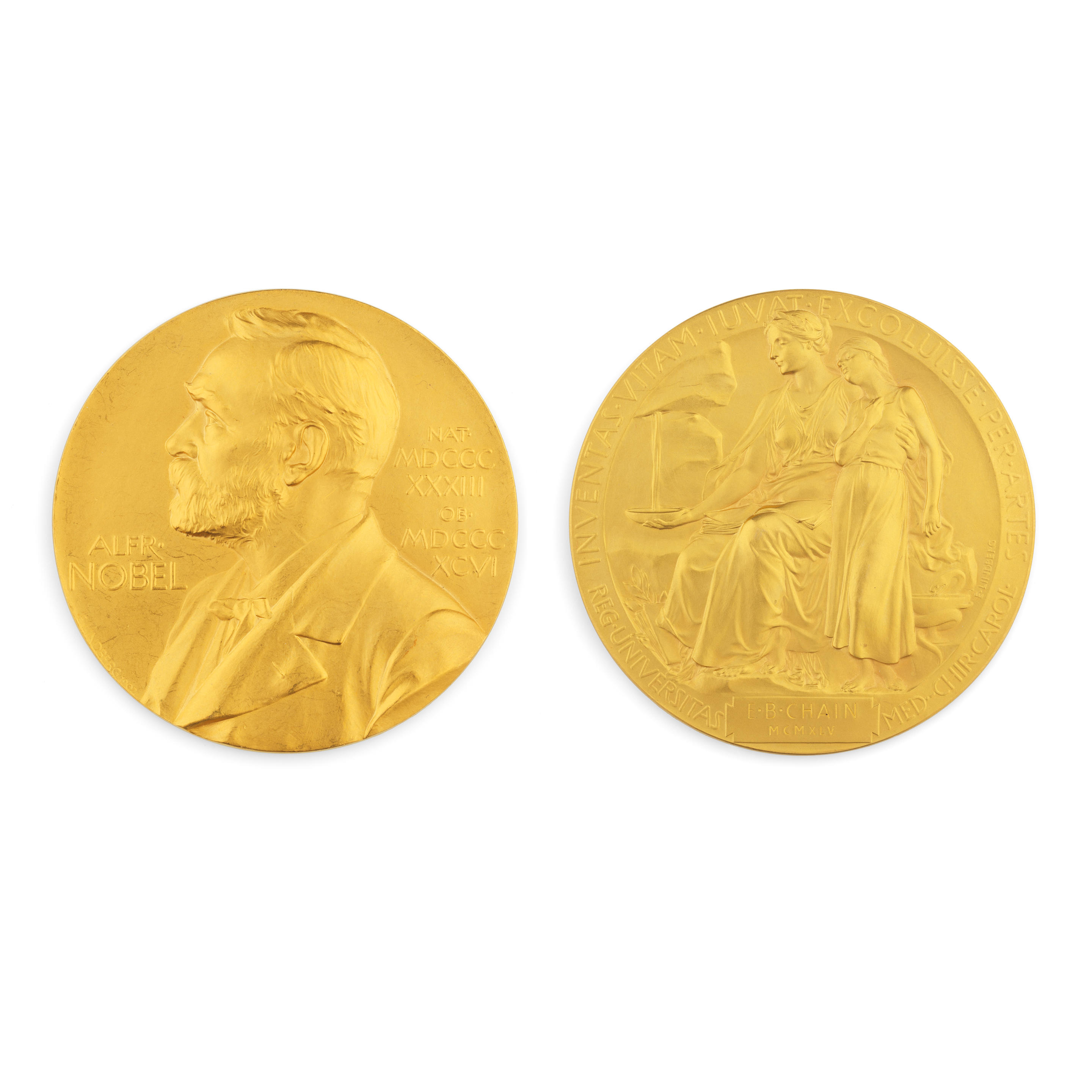
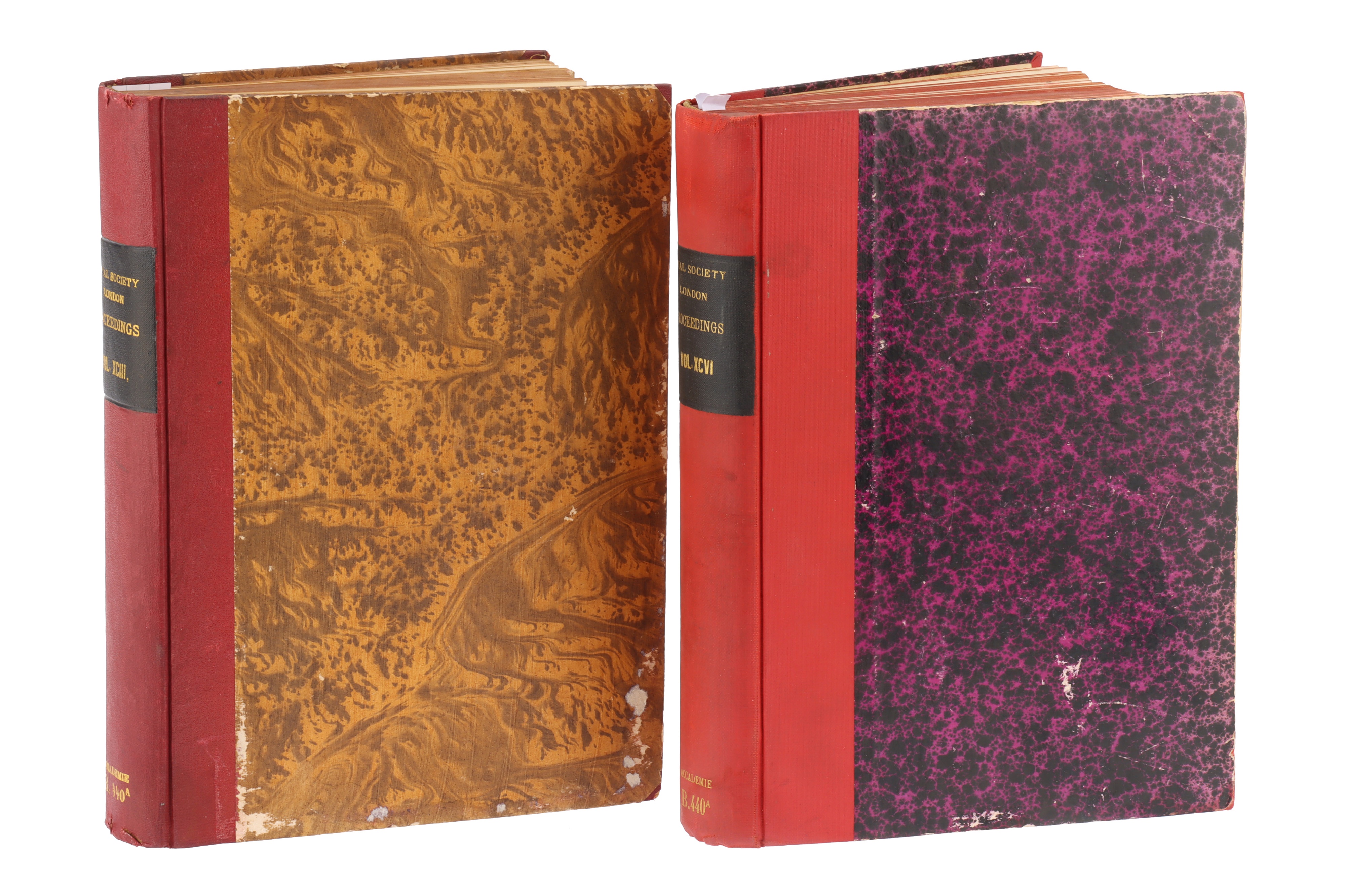
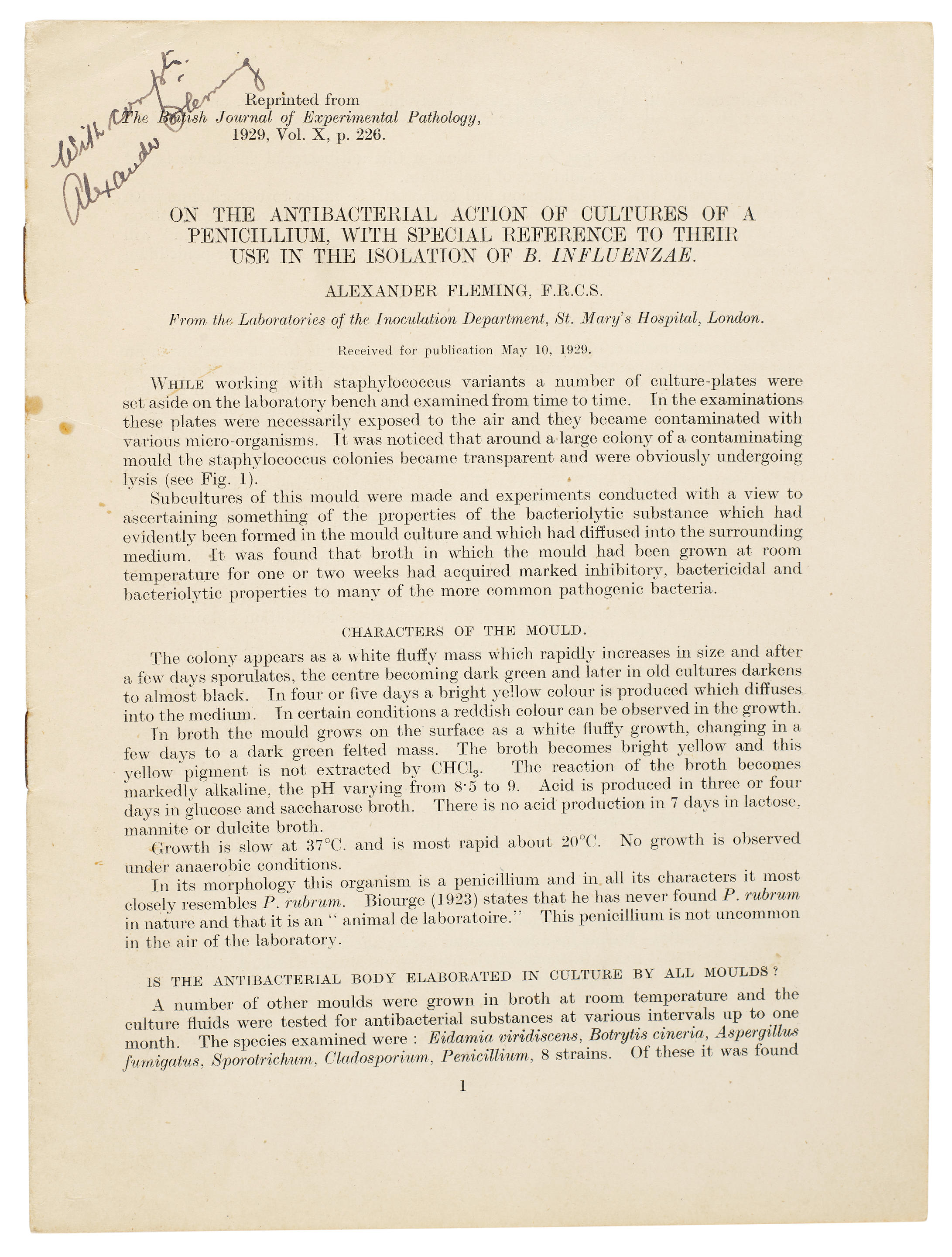




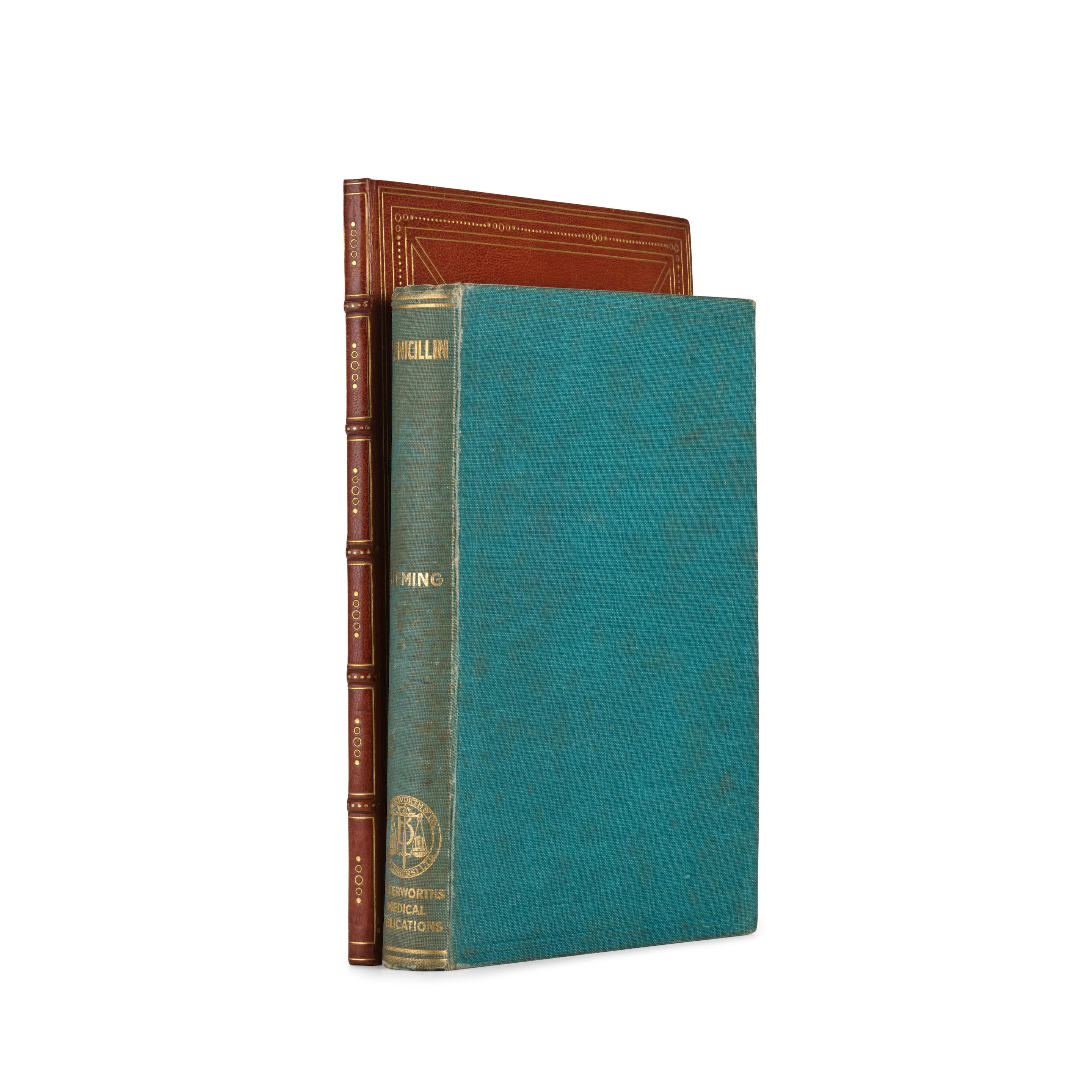
.jpg)
.jpg)

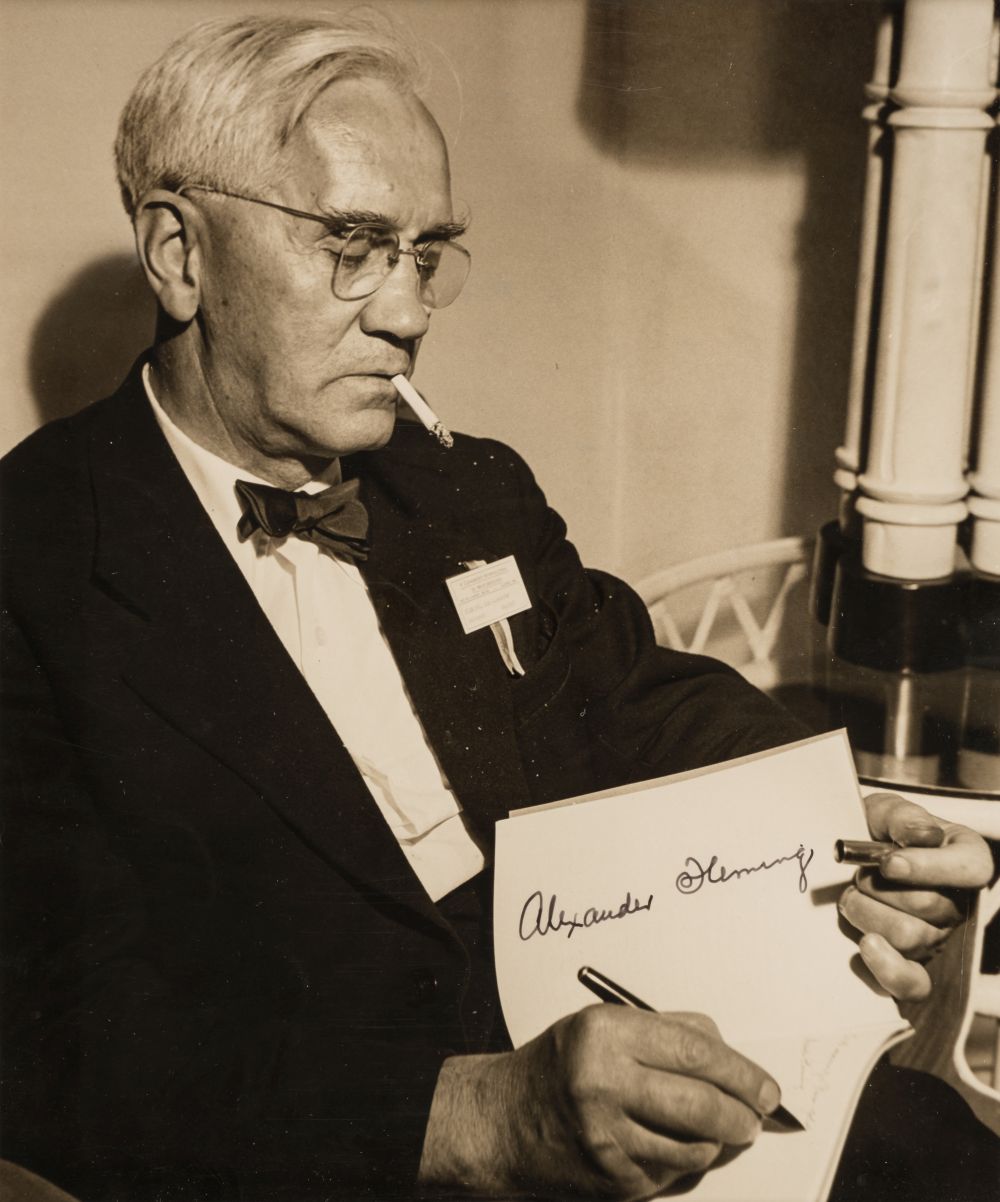
Testen Sie LotSearch und seine Premium-Features 7 Tage - ohne Kosten!
Lassen Sie sich automatisch über neue Objekte in kommenden Auktionen benachrichtigen.
Suchauftrag anlegen